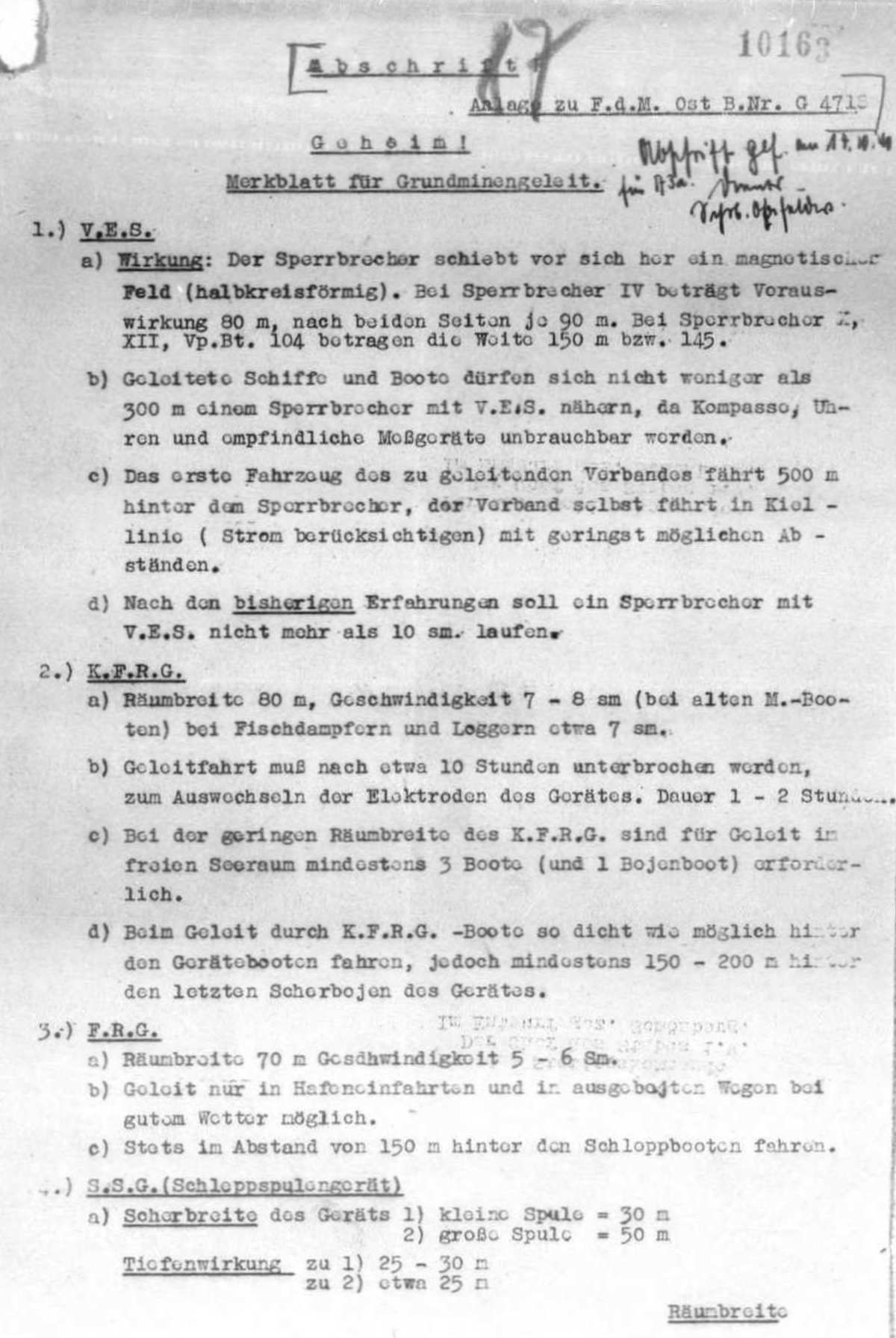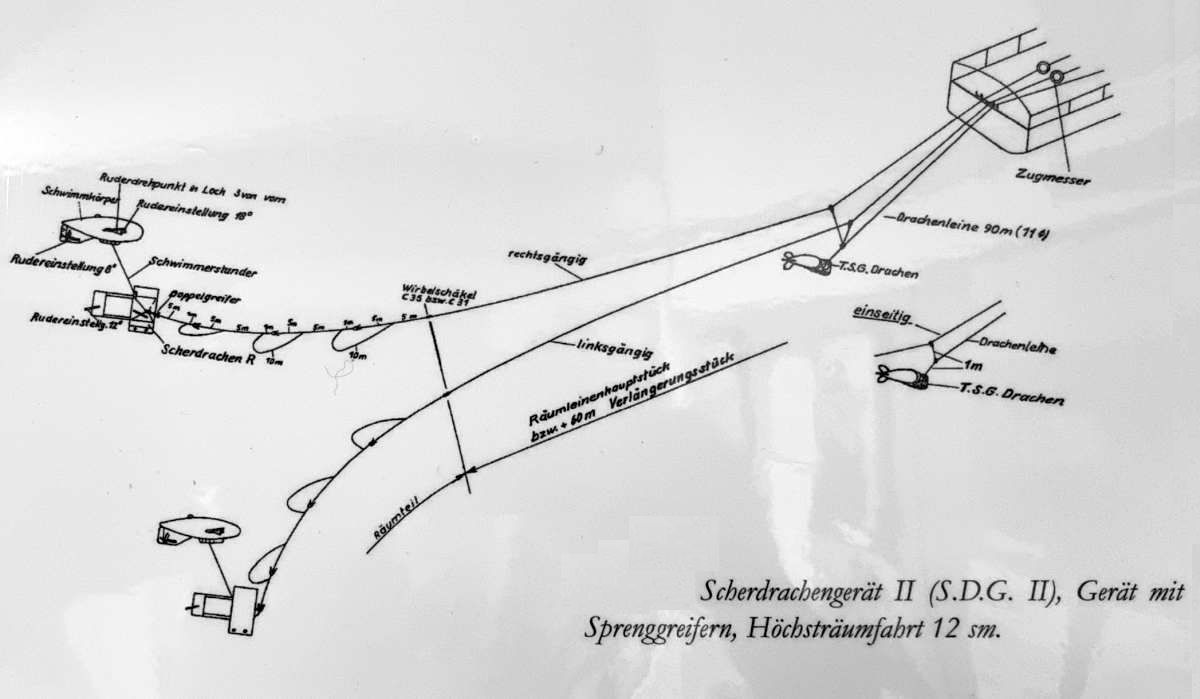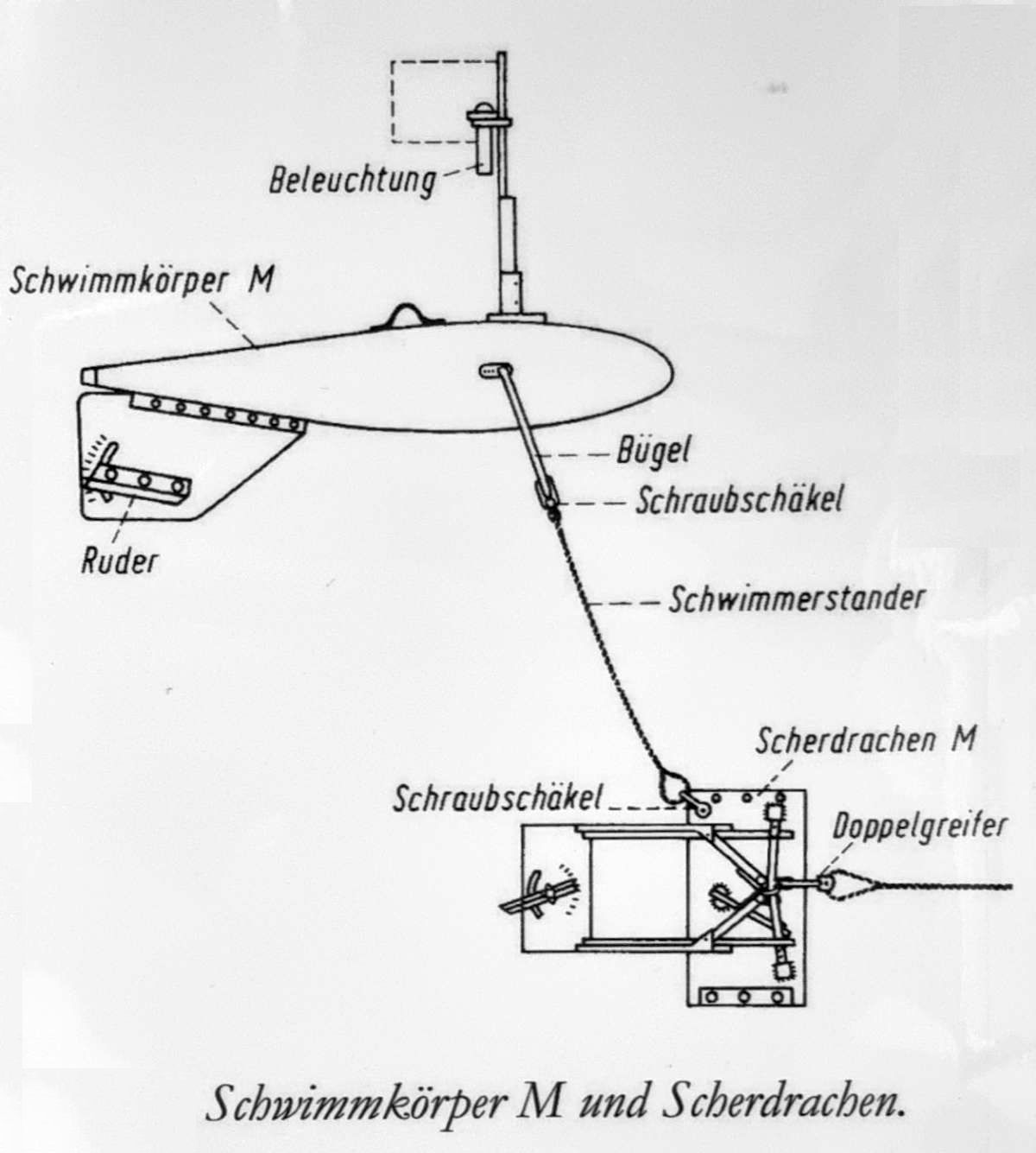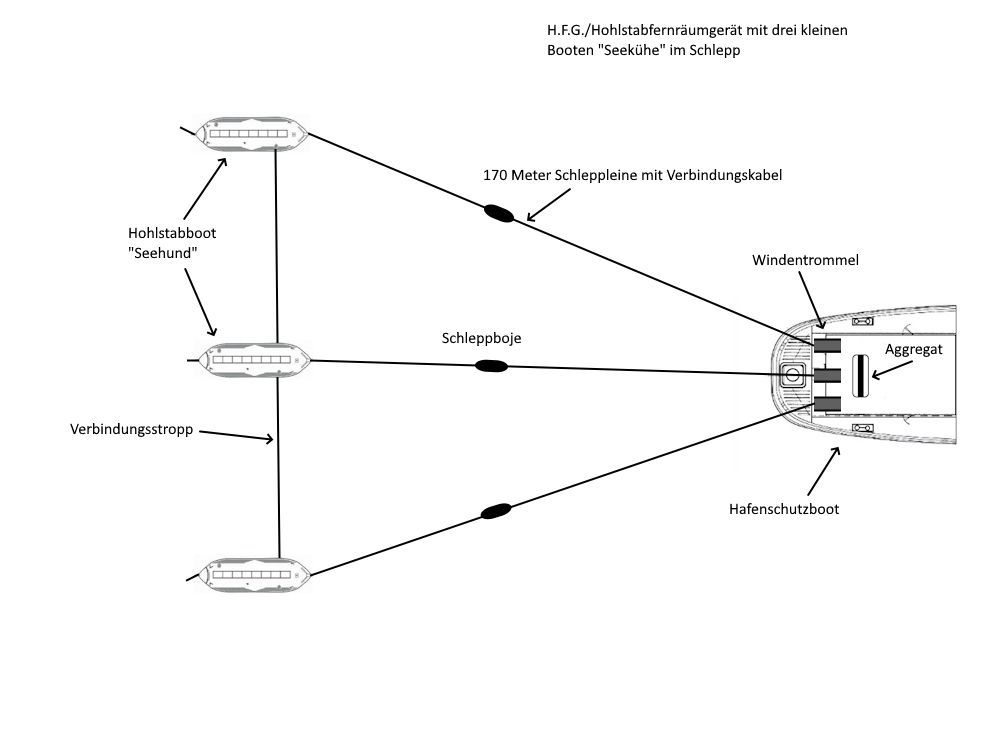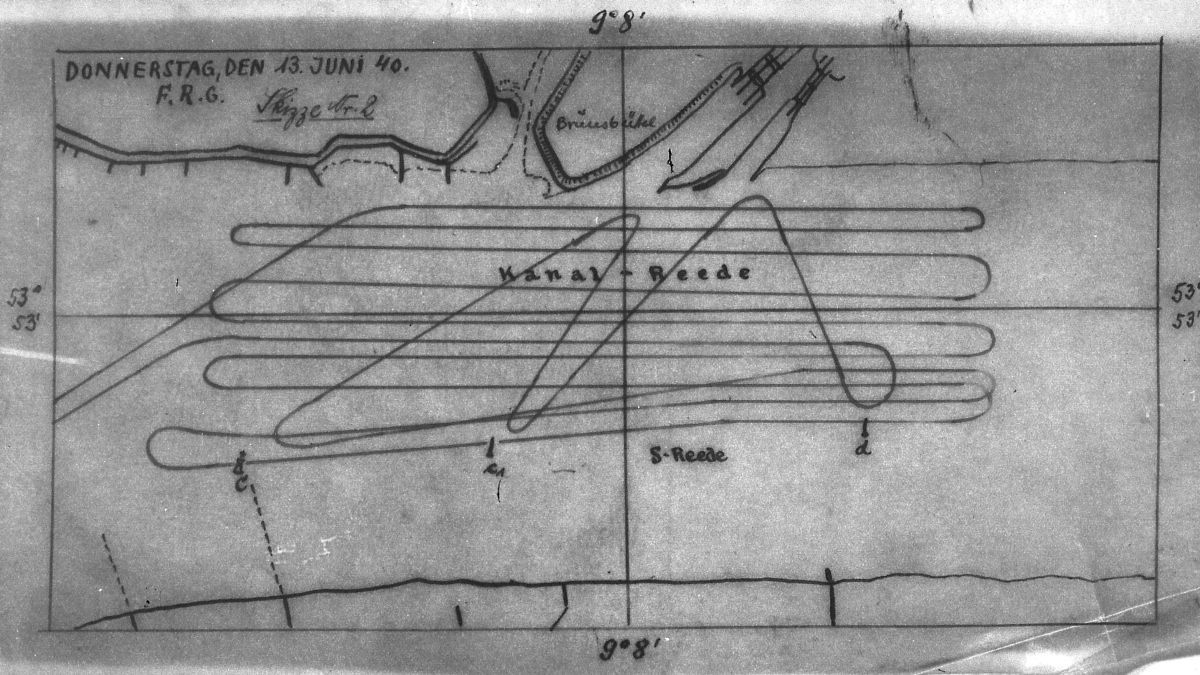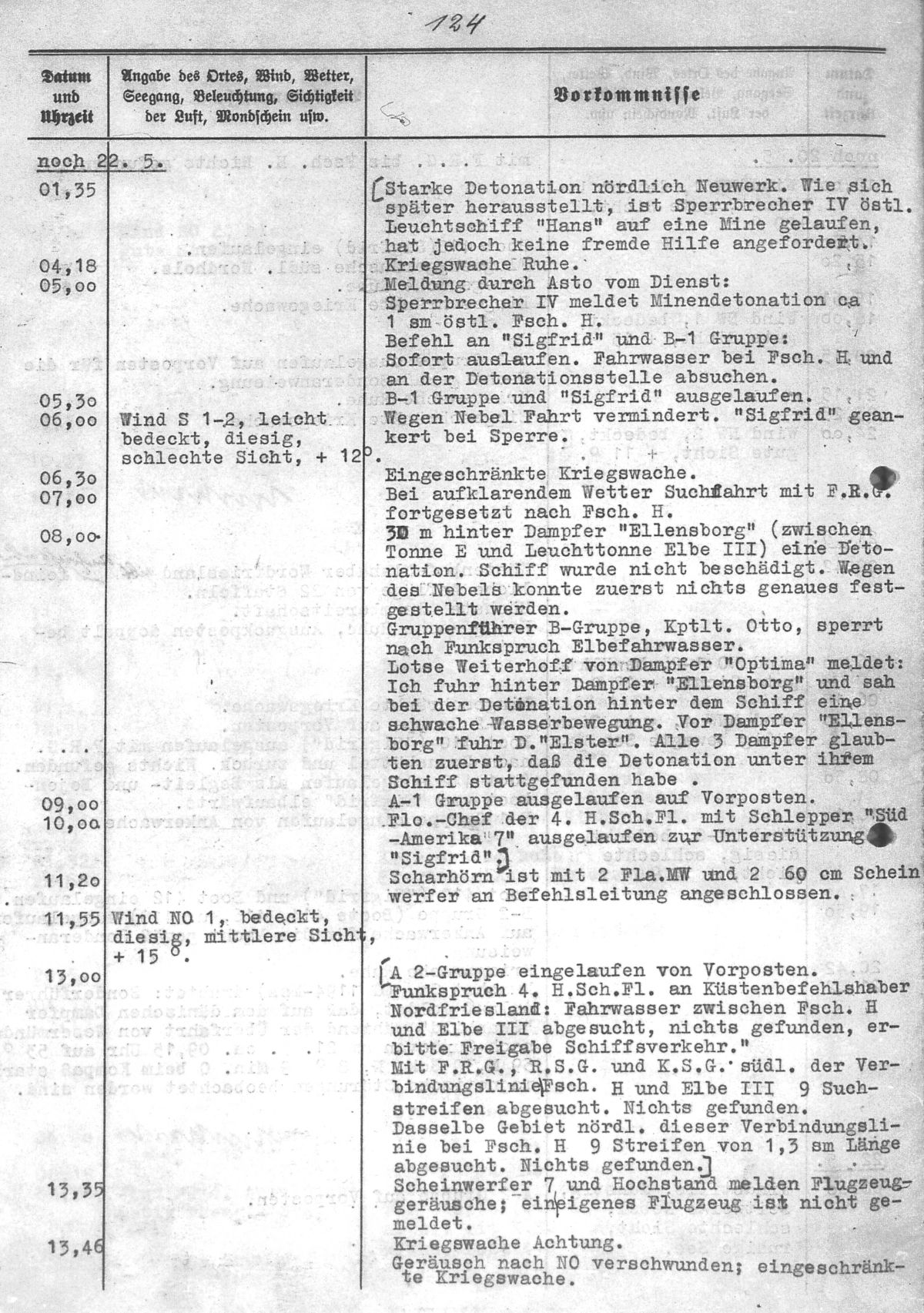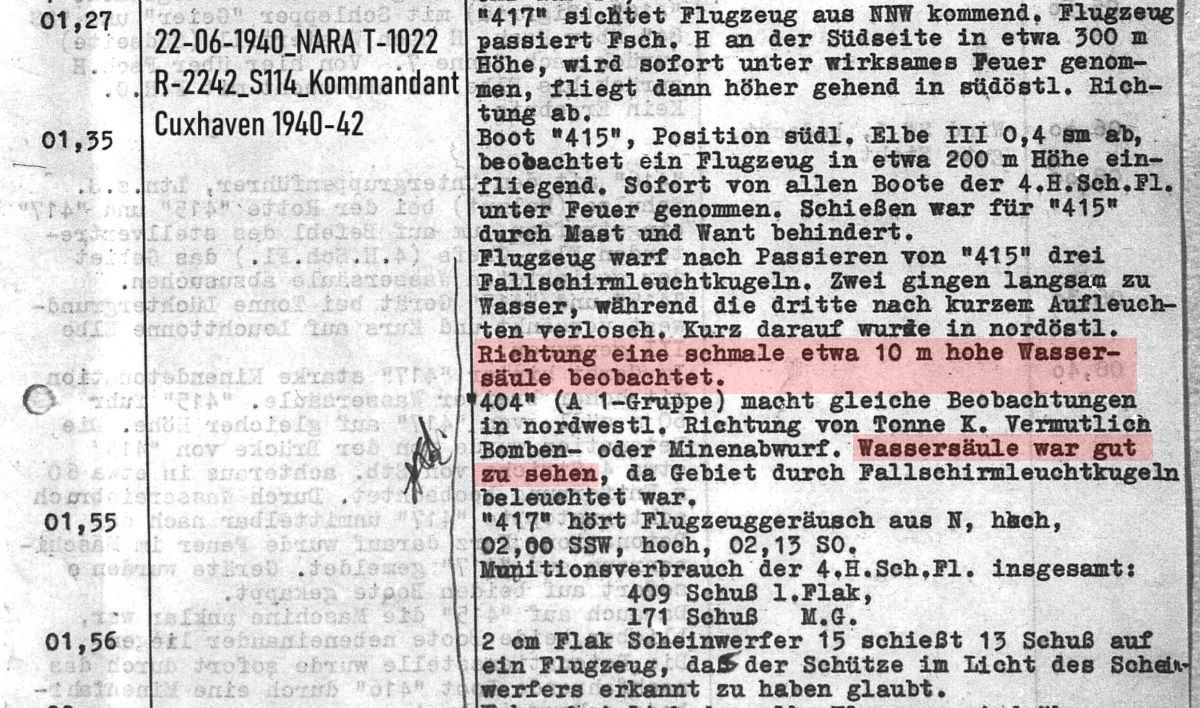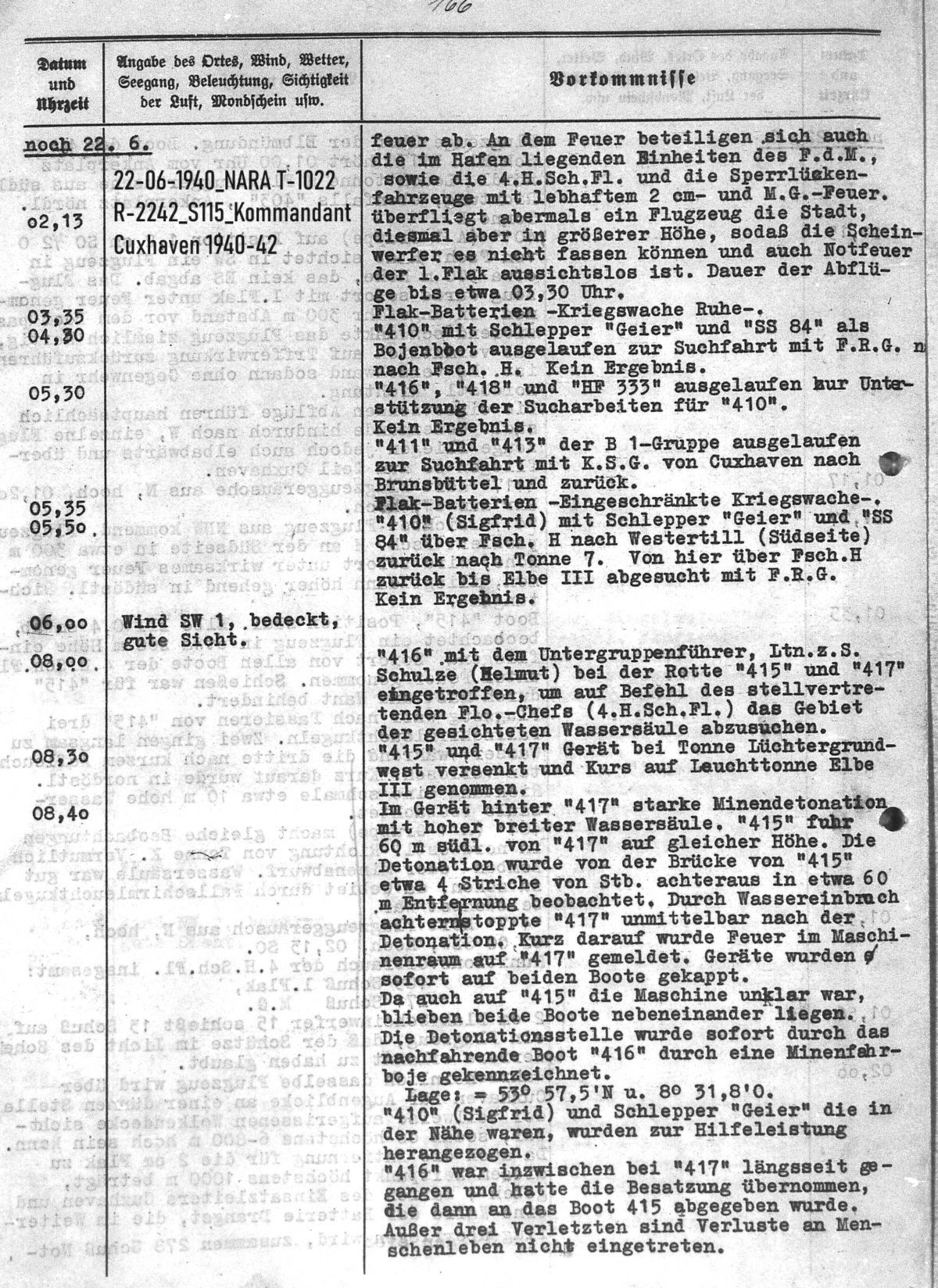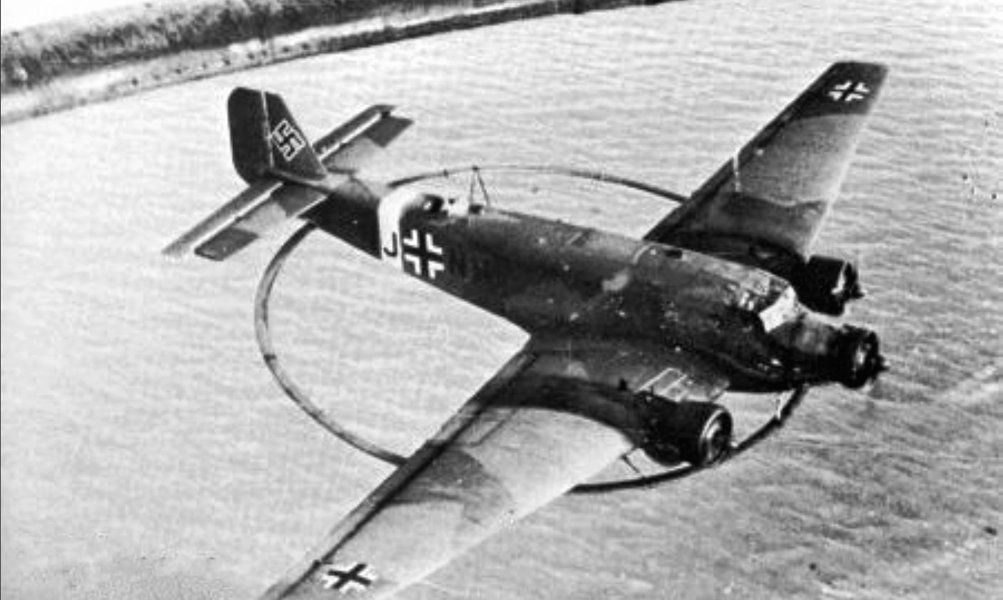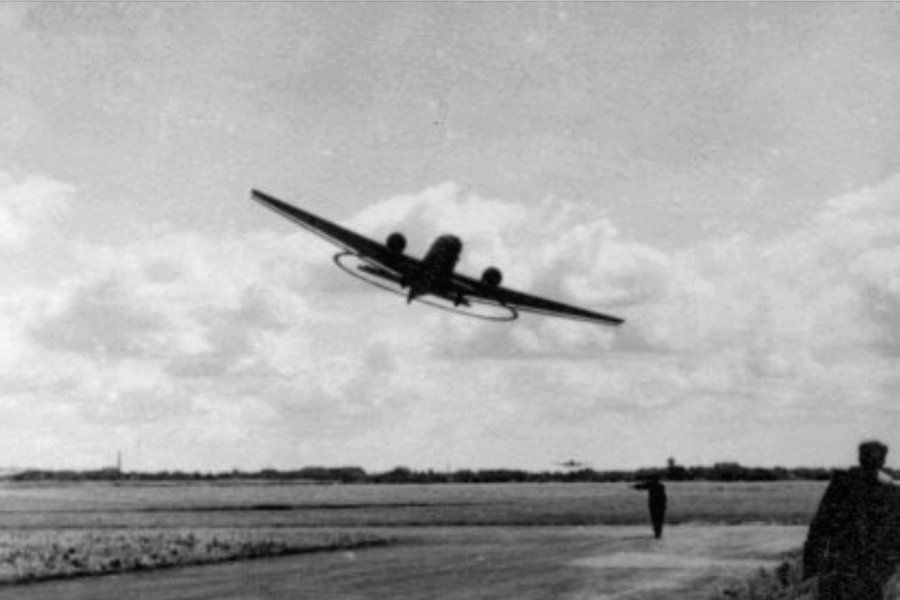
Mine clearance during the war by watercraft
The Elbe, from the river mouth to Hamburg, was also the target of mine-laying English aircraft. Even the port of Cuxhaven was not safe from dropped interceptor weapons. Immediately after the war began, the 4th/Cuxhaven Port Protection Flotilla was set up. The unit, which consisted mostly of former fishing trawlers, had been equipped with light anti-aircraft weapons so that it could fight enemy aircraft if necessary. One of its tasks was to secure the shipping lane against enemy aircraft, especially low-flying bombers, torpedo planes and mine planes. The second task was to search the Elbe shipping lane and its tributaries for interceptor weapons. At least one of the four groups of the 4th/HSF was constantly in naval positions on the Elbe and beyond. Almost every other night, aircraft from the British Coastal Command of the Royal Air Force flew over the river to drop their deadly load and disrupt the convoys leaving Altenbruch Roads. If there was any suspicion that bombs had been dropped, the area was searched using different devices in specific search patterns in order to trigger a forced detonation of the suspected objects. This dangerous procedure could be extremely dangerous for the search vehicles themselves. It was not uncommon for vehicles to be seriously damaged or even sunk, with human losses. In addition to the mainly dropped magnetic bottom mines, drifting mines were also occasionally found, some of them English but also German models. It was not uncommon for heavy detonations to be heard from land from magnetic mines mistakenly thrown into the mudflats or drifting mines drifting into the surf. According to contemporary witnesses, these explosion sounds were significantly louder and more intense than those from dropped explosive bombs due to the large quantities of explosives used. As the war progressed, it became apparent that the vehicles of the 4th/HFS. Due to their design, they were not able to completely clear bottom mines. After trials, the naval command agreed to use a mine breaker with a VES system to search for mines.
The following equipment was used for mine clearance at sea:
- F.R.G. (Fernräumgerät): Der Begriff "Fernräumgerät" umfasste in der Deutschen Kriegsmarine im weiteren Sinn alle Gerätesätze, die gegen Minen mit Magnet- und/oder Akustikzünder eingesetzt wurden. Im engeren Sinne waren damit die Gerätesätze gegen Magnetminen gemeint.
- K.F.R.G. (Kabelfernräumgerät): Hierbei handelte es sich um zwei 40 m lange Elektroden, die ca. 120 m nebeneinander hinter dem Räumfahrzeug durchs Wasser geschleppt wurden. Zwischen den Elektroden floss durch das Wasser ein Strom von ca. 500 bis 1200 A, der Magnetminen in einem 120 bis 280 m breiten Streifen zur Exploson bringen sollte.
- H.F.G (Hohlstabfernräumgerät): Bei diesem Gerät wurden Schwimmkörper (Seekühe) hinter dem Schleppfahrzeug her gezogen, auf denen eine Spulenwicklung aufgebracht war. Durch das erzeugte Magnetfeld, sollten die zu räumenden Minen zur Explosion gebracht werden. In der Nachkriegszeit hatten diese Hohlstabboote einen eigenen Antrieb und wurden ferngelenkt.
- S.S.G. (Schleppspulgerät), das nichts anderes als eine Kabelspule ist, die horizontal durchs Wasser geschleppt und von Scherbrettern offengehalten wurde.
- M.P.G. = Motorpinaßgerät (gegen Kontaktminen, mit Krallengreifer als Suchgerät mit Sprenggreifer als Räumgerät einzusetzen)
- K.S.G. = Korbsuchgerät (in Flachgewässern unter 12 m auf glattem Grund, kann von Motorfischkuttern oder ähnlichen Fahrzeugen gefahren werden)
- R.S.G. (Krallengreifer)
- R.B.R.G.
- V.E.S. (Voraus-Eigen-Schutz- oder Vorauswirkende-Eigenschutz-Anlage)
Schorsch/Lexicon of the Wehrmacht, MB
Deployment of a clearance group from 4./HSF. after a suspected mine was dropped. This resulted in a heavy detonation, which ultimately caused the harbor patrol boat 417 to sink. In addition, 3 crew members were injured.
It also happened regularly that sea mines drifted ashore without detonating. The boats of the harbor protection flotilla also towed drift mines away from the endangered areas and anchored them on sandbanks. The clearance teams then took over to defuse them or blow them up on site. Another way of destroying the mines was to fire directly at them from light anti-aircraft weapons from land or from HSF boats from a safe distance.
The barrier breaker
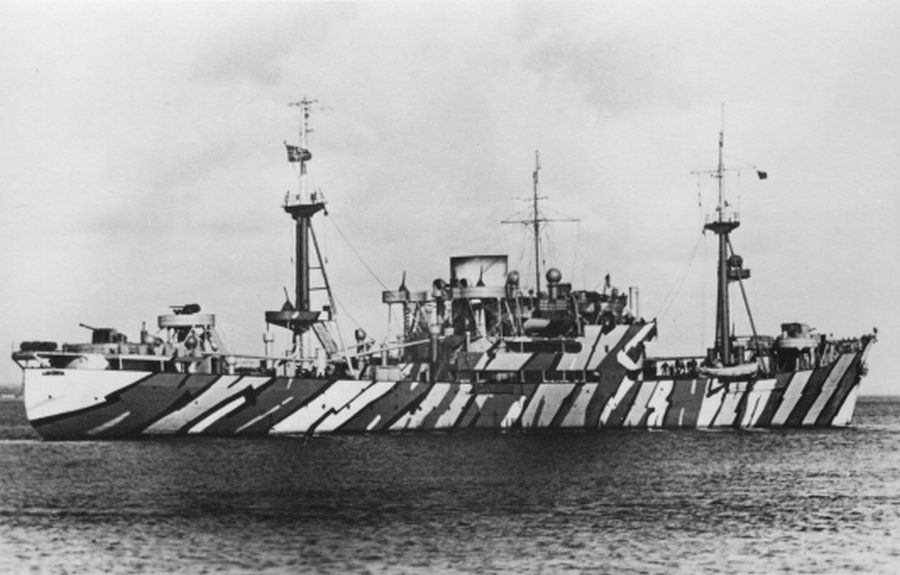
The Sperrbrecher (combined minesweeper plus anti-aircraft guns) were mainly converted merchant ships. These ships had 20mm or 37mm guns positioned on high platforms at the bow and stern. Other vessels had 105mm guns or 88mm anti-aircraft guns, which the RAF called "heavy anti-aircraft ships". To escort ships or submarines in and out of minefields, the Sperrbrecher was equipped with a VES (Voraus-Eigen-Schutz- oder Vorwirkungder-Eigenschutz-Anlage) system, a huge magnetic field generator. This sent out a powerful magnetic pulse in the hope of detonating the mine 500 meters ahead of it. In addition, sound waves in the form of a mechanical hammer or tuning fork were produced to trigger the detonation. Since the ships were often an easy target for air attack, they were also equipped with barrage balloons. About 50% of the total mine breakers were lost during mine clearance or air raids.
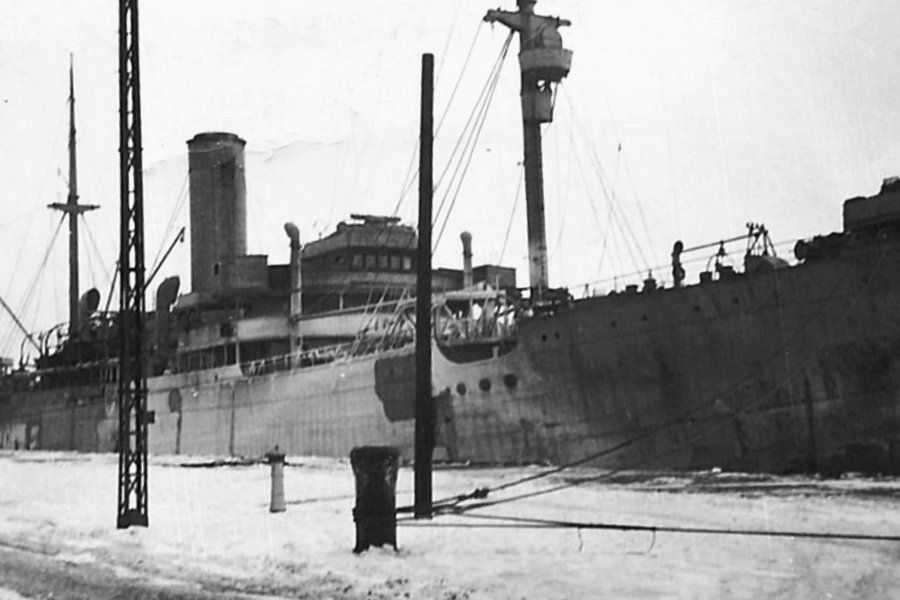
Bildquelle: Claus Seedorf
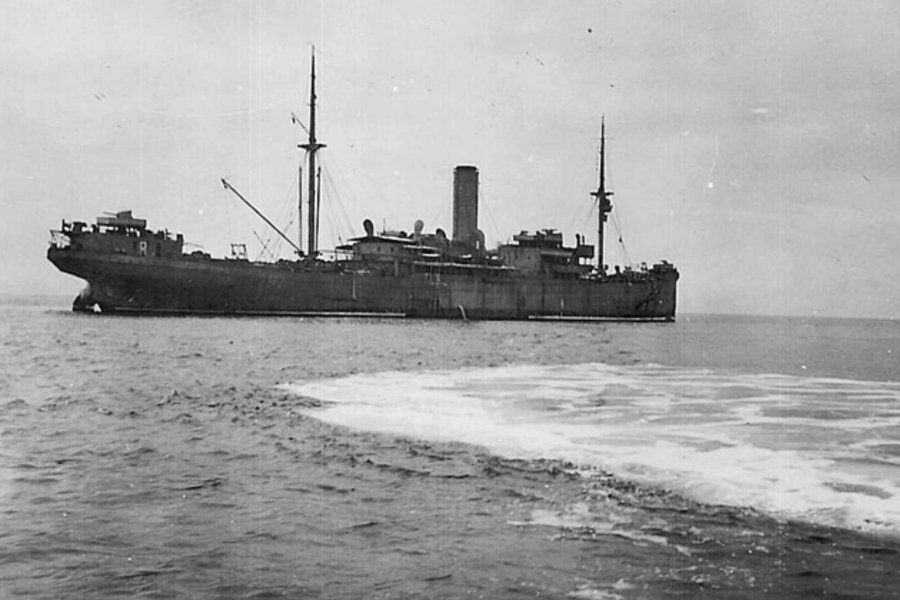
Bildquelle: Claus Seedorf

Source: KTB Marine Station of the North Sea 14.10.1941
Mine clearance from the air / Mine search group "Mausi"
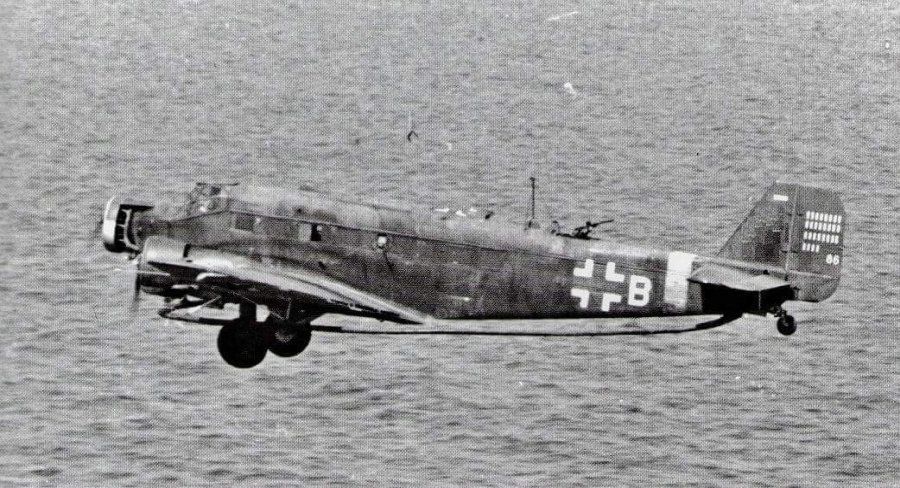
Zur Räumung der auf dem Magnetprinzip beruhenden Grundminen, wurden neben den Marineeinheiten beider Kriegsparteien auch Flugzeuge eingesetzt. Auf deutscher Seite wurde durch die Luftwaffe die Minensuchgruppe "Mausi" gebildet. Zum Einsatz dafür kamen Junkers Ju 52/3m, an deren Rumpf eine Magnetspule angebracht war. In der Maschine befand sich ein Generator mit Umformer, welcher für die benötigte Energie der Anlage sorgte. Ziel dabei war es, mit dem Flugzeug in etwa 30 Metern Höhe bei etwa 120 Km/h über das Wasser zu fliegen und durch das erzeugte Magnetfeld die Grundminen zur Explosion zu bringen. Der Ring an der Maschine besaß eine Strahlungs-Reichweite von etwa 100 m. Um eine Mine bei ca. 80 Metern Wassertiefe zur Detonation zu bringen, war es teilweise nötig in nur 10-20 m Höhe über die See zu fliegen. Daher galten Einsätze der fliegenden Minensuchgruppen als hochriskant, da die Wassersäulen der explodierenden Minen eine enorme Höhe erreichen konnten. Mehrfach wurden Minensuchflugzeuge dabei zum Absturz gebracht. Auf dem Flugplatz Weddewarden bei Bremerhaven war ab 1942 die 2./ Staffel der Minensuchgruppe Mausi stationiert, sie war zuständig für den sehr stark verminten Bereich der Deutschen Bucht.
Quelle: Der Landser-Grossband Nr. 909 - Sonderkommando MAUSI - Die Minensuchflieger der Luftwaffe; Rudolf R. Blümert

On "Wehrmacht Day 1940" a collection of captured sea mines and depth charges was exhibited at what is now Buttplatz. Bahnhofstrasse is in the background. Source: Private
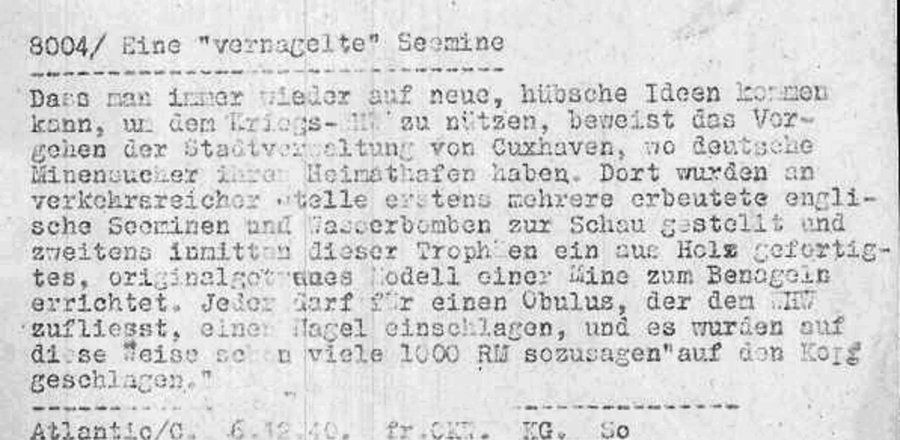
Source: Claus Seedorf
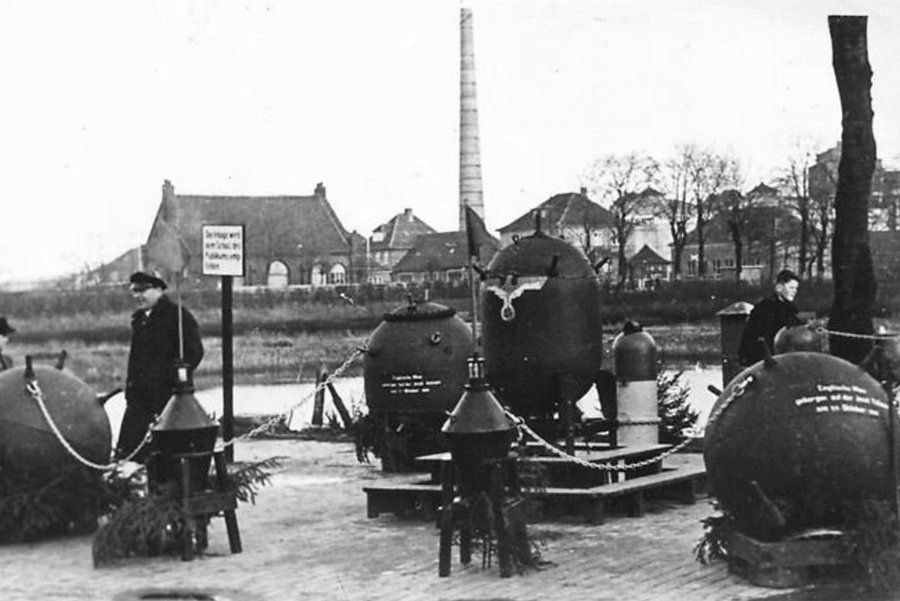
In front of the Schleusenpriel.Source: Claus Seedorf



